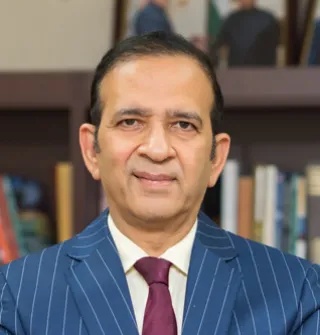-
CENTRES
Progammes & Centres
Location
India has asserted an edgier counter-terror doctrine: credible, calibrated, and coercive

Image Source: Getty
When LeT terrorists struck in Kashmir on 22 April, Pakistan had effectively jumped on the first rung of a familiar conflict escalation ladder. It did so with implausible deniability of its role. But this time was different.
The two countries climbed perilously higher into conflict than they had done ever before in this century. Between May 7 and 10, India demonstrated not only military precision and a technological edge, but also dominance of the escalation dynamics, coupled with a smart instinct to de-escalate once objectives were met. By the evening of Saturday, India had completed what it set out to do: target terrorists, enforce accountability, and reassert deterrence—without slipping into full-scale war.
Op Sindoor may be seen as the next rung of Op Bandar—the air strikes in Balakot in 2019 that became shorthand for a bolder, more kinetic approach to deterrence.
The operation was the latest chapter in an evolving doctrine that India has been shaping since 2016, when it first abandoned strategic restraint with cross-border surgical ground strikes responding to terrorism in Uri. Indeed, Op Sindoor may be seen as the next rung of Op Bandar—the air strikes in Balakot in 2019 that became shorthand for a bolder, more kinetic approach to deterrence. Each iteration has added layers of credibility and precision to India's posture against cross-border terrorism, adding both punitive and pre-emptive elements to now reimpose credible deterrence. The posture has shifted from strategic ambiguity to one of conditional clarity: cross-border terror will invite cross-border consequences.
The international response to Sindoor was swift—and revealing.
In 2019, former Secretary of State Mike Pompeo spoke to both India’s foreign minister and Pakistan’s army chief late at night, aiming to de-risk what he thought was a potential nuclear escalation. Even if such tales are embellished, they illustrate how America has seen itself: as a crisis manager, an honest broker de-risking a nuclear situation.
Global players, particularly the US and Saudi Arabia, played a crucial role in amplifying India's message, pressing Islamabad further.
Like after Operation Bandar in 2019, India's military actions, or their threat, drove Pakistan's request for a ceasefire. Simultaneously, global players, particularly the US and Saudi Arabia, played a crucial role in amplifying India's message, pressing Islamabad further.
In fact, India activated a spectrum of diplomatic pressure levers. Reports suggest that Washington leveraged the billion-dollar tranche of IMF assistance to Pakistan, conditioning its release on an immediate de-escalation. The message was blunt: Islamabad’s economic lifelines now depend on its military behaviour.
India would indulge Trump’s ‘mediation’ offers, but only up to a point. It does not seek mediation, only pressure on terrorism. Any effort to internationalise Kashmir remains a red line for Delhi.
India has now made a doctrinal pivot in its fight against terrorism. India does not need war—or passive restraint. It has delivered a credible, coercive slap against terrorism. But will that prevent the next Pahalgam? Will it make Pakistan rethink the costs of using terrorism as strategy? For India, deterrence is not about spectacle. It has reshaped the adversary’s calculus.
This commentary originally appeared in Times of India.
The views expressed above belong to the author(s). ORF research and analyses now available on Telegram! Click here to access our curated content — blogs, longforms and interviews.

Ajay Bisaria is a Distinguished Fellow at ORF. He is also a strategic consultant and commentator on international affairs. He has had a distinguished diplomatic ...
Read More +